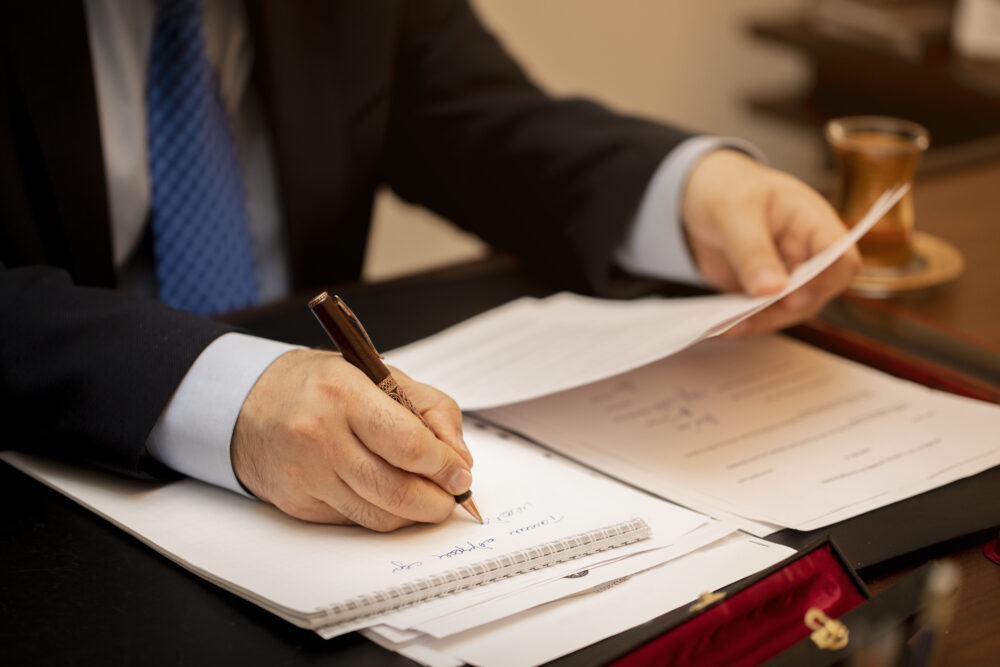The statute of limitations for initiating a lawsuit is a fundamental issue. However, it is easily “forgotten” when resolving most types of disputes, whether it is lawsuits in Court or Arbitration. The issue of statute of limitations in intellectual property disputes is no exception.
Intellectual property is an intangible asset with high commercial value and influence on enterprises’ business activities. However, with the essence of intangible assets, intellectual property assets are highly vulnerable to infringement due to unauthorized use. When pursuing settlement measures related to intellectual property disputes, some organizations and individuals still do not have adequate awareness of the issue of statute of limitations for lawsuits, thereby losing the right to sue due to the expiration of the statute of limitations. This article will analyze the statute of limitations for filing lawsuits in intellectual property disputes and the writer’s point of view on applying the statute of limitations in intellectual property disputes.
1. Some general provisions on statute of limitations for initiating lawsuits
1.1 What is the statute of limitations for filing a lawsuit?
The current Intellectual Property Law does not have a separate provision on the statute of limitations for filing a lawsuit for intellectual property disputes is used according to the Civil Code, the Civil Procedure Code.
The statute of limitations for initiating a lawsuit is the time limit. The subject is entitled to initiate a lawsuit to request the Court settle the civil case to protect the infringed lawful rights and benefits. Provided that the time expired, the right to sue is lost. The statute of limitations is calculated from the beginning of the first day of the statute and ends at the end of the last day of the statute of limitations. The statute of limitations for initiating a civil lawsuit is counted from the date the person with the right to claim knows or should know that his/her lawful rights and interests have been infringed unless otherwise provided for by law.
The statute of limitations for initiating a lawsuit in particular and the statute of limitations in general is (i) a period determined and prescribed by law; (ii) the subjects are obligated to comply that they cannot agree to extend or decrease the statute of limitations. Beginning from this essence, intellectual property holders whose intellectual property is being infringed must actively request the Court or Arbitrator to protect their legitimate rights and interests when infringing within the time prescribed by law. If the statute of limitations expires, the intellectual property right owner will lose the right to initiate a lawsuit as prescribed.
Depending on each specific dispute and determining the nature of the dispute, the application of the statute of limitations will be different. For instance, the statute of limitations for initiating a lawsuit to request the Court settle a contract dispute related to the intellectual property and claim for damages is 3 years from the date the claimant knows or should know their legitimate interests are infringed. In contrast, the statute of limitations for lawsuits applied to commercial disputes is two years from when legitimate rights and benefits are infringed.
1.2 Is there an exception case that allows the statute of limitations not to be applied?
According to the provisions of the current Civil Code, some cases are considered as exceptions because when one of these cases occurs, the statute of limitations will not apply:
- Requesting to protect personal rights not attached to the property.
- Requesting for protection of property rights, unless otherwise provided by this Code or other relevant laws.
- Disputes over land use rights in accordance with the Land Law.
- Other cases prescribed by law.
In addition, when a force majeure event, an objective obstacle and other cases prescribed by law leads to an intellectual property holder having the right to initiate a lawsuit but unable to initiate a lawsuit, the time for Force majeure events or objective obstacles will not be included in the statute of limitations for initiating a lawsuit.
1.3 Legal consequences when the statute of limitations expires
In case the intellectual property right holder initiates a lawsuit when the statute of limitations expires. Simultaneously, the other party requests the application of the statute of limitations before the first-instance Court issues a judgment or decision to settle the case. Therefore, the Court will have to suspend the application of the statute of limitations according to the provisions of Article 217 of the Civil Procedure Code. Unless the dispute is in the case (i) the statute of limitations for initiating a lawsuit cannot be applied or (ii) it is proved that the time of failure to exercise the right to initiate a lawsuit is an objective obstacle, the time of occurrence of the objective obstacle shall not be counted on the statute of limitations. The statute of limitations will then be extended.
See more: Handling the counterfeit: Challenging or Easy?
2. Is the application of the statute of limitations for initiating lawsuits on intellectual property disputes guaranteed to protect the legitimate rights and benefits of the intellectual property owner?
From the author’s point of view, applying the statute of limitations for filing a lawsuit for an intellectual property dispute does not protect the legitimate rights and benefits of the owner. Firstly, as mentioned at the beginning of the article, intellectual property is uncommon because of its intangible nature. Owners cannot hold their intellectual property. Intellectual property creators are recognized as owners when they invest their money, efforts, and creativity to create intellectual property, such as works, trademarks, inventions, industrial designs, utility solutions. Simultaneously, the owner must satisfy the conditions for registration of protection for objects subject to compulsory regulations. In addition, intellectual property is easy to infringe because an organization or individual infringes – they do not necessarily hold the property itself, so there is no act of transferring from the owner to the person who committed the act of infringement. Infringement can be made simultaneously while the owner is still using it and is in the period of protection. Secondly, except for business secrets, trade names, and well-known trademarks, most types of property are protected for a certain period. The most important meaning of intellectual property protection is that the owner has the exclusive right to use the protected property within the scope and term of protection.
From the above two bases, if the owner of an intellectual property right knows an infringement but fails to exercise the right to initiate a lawsuit and the statute of limitations expires, the owner may not request a court or arbitration to protect legitimate rights and benefits. The application of the statute of limitations for filing a lawsuit against intellectual property assets that are still within the protected period under the provisions of the intellectual property law is not convincing. There was a case in the People’s Court of Appeal that the application of the regulation on the expiration of the statute of limitations for initiating a lawsuit resulted in the suspension of the settlement. Accordingly, the plaintiff is the owner of the utility solution patent, which was granted exclusive protection on December 20th, 2002, and is valid until August 20th, 2011. When the plaintiff discovered that there was an infringement of intellectual property, the plaintiff did not initiate a lawsuit. Alternatively, the plaintiff reported to the district-level People’s Committee, and sent a notice to the defendant to request an end to the violation. The case has also been jointly handled by the district-level People’s Committee and the Department of Science and Technology’s Inspection Team. However, from the time the plaintiff discovered an infringement (2003) until the time the People’s Committee transferred the file to the Court for settlement on March 24th, 2008, the Court of Appeal applied regulations on the expiration of the statute of limitations for initiating lawsuits to terminate the settlement of the case. In this dispute, the plaintiff had to spend much time asking state authorities to protect his rights and interests from 2003 until July 2011. The Cassation Decision No. 06/2015/KDTM-GDT was made to cancel the decision to terminate the case settlement and handed over the case file for re-trial. Lessons learned from the above dispute is that the plaintiff should still actively file a lawsuit when detecting an infringement. The exercise of the right to sue and concurrently implement other handling measures as other means to protect their intellectual property rights.
Whether the owner of intellectual property due to the expiration of the statute of limitations for initiating a lawsuit, his/her legitimate rights and benefits are infringed upon, are not protected by law, and the party performing the infringing act is not forced to perform the obligation. The dispute mentioned above still has many shortcomings in the proceedings, from determining the time to calculating the statute of limitations for initiating lawsuits, evidence, violations, etc. Therefore, in the author’s view, the owner should actively register for intellectual property protection as soon as they are created and actively apply more measures to handle violations properly and prevent risks. The protection of the intellectual property is not merely the protection of the commercial value that the organization or individual can receive. It is essential to protect their efforts and business reputation in the market, prevent acts of counterfeit goods, and contribute to protecting the interests of consumers.
Besides the civil lawsuit measures in this article, the intellectual property owner can still consider and apply other dispute resolution measures related to intellectual property. These measures will be mentioned in the following article.
Disclaimer: This article is for general information only and is not a substitute for legal advice. Apolat Legal is a Vietnamese law firm with experience and capacity to advise on matters related to Intellectual Property Rights. Please click here to learn more about our services and contact our lawyers in Vietnam for advice via email info@apolatlegal.com.





































